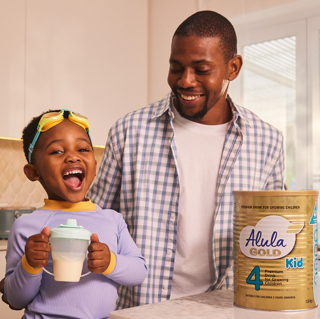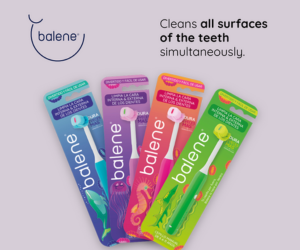Ask ten nutrition experts what you should eat and you will get ten, often-conflicting diet plans. Add Attention Deficit Hyperactivity Disorder (ADHD) to the mix and you will be even more confused.
Firstly ADHD is not caused by diet. There have been numerous studies over the years to support this statement. Does diet affect ADHD children? Of course, Diet, as in “what we eat”, affects each one of us whether we have ADHD or not. If you feel unsteady on a stairway, you grab the banister to steady yourself. Likewise, if your child’s (or your) brain chemistry is off kilter with ADHD, favouring healthy foods engenders equilibrium.
By providing a healthy diet and environment is the most pleasurable – and the least invasive – way to care for your loved ones and yourself. The information given in this article need not be exclusively for the use of the ADHD child but all members of the family will benefit from making this subtle yet effective change to their daily eating schedule.
The diet for the ADHD child is the bedrock on which you need to build all other therapies. It is no use adding a handful of supplements to your child’s diet if their actual daily intake is not even meeting the basic recommended dietary intakes (RDI’s) for their age. Supplements added to a balanced healthy diet will be much more effective if taken with good food than as an isolated tablet.
The ADHD child’s response to therapies like Occupational therapy, physiotherapy etc. will be much better if the child has the necessary energy resources to draw from during a therapy session. If your child requires medication to treat her ADHD symptoms then starting off with a sound, healthy dietary platform will only enhance the effectiveness of the medication. Likewise attentiveness, concentration and participation in class is a lot more probable if your child has eaten a healthy, well balanced breakfast and this is true for all children, not just children with ADHD.
Allergies have also been studied extensively with their link to ADHD so let’s just briefly unpack this before we go into the details of some healthy diet tips. Children and adults, who have allergies, be they to foods, additives or the environment are not generally happy people while their allergies are aggravating them. A child who has rhinitis (runny nose) and is constantly sniffing and coughing due to the aggravation of a post nasal drip will struggle to sit still and focus on what the teacher is saying or the work he should be doing. The distinction needs to be made between ‘food allergies causing ADHD versus the symptoms of the allergy exacerbating the symptoms of ADHD. If you suspect your child has allergic tendencies to certain foods then you must get that seen to by taking your child to a specialist or undertaking an elimination diet under the advice of a trained professional.
Having said all of this, changing diet is a process and not like taking a pill. It takes time, commitment and patience and more importantly ‘buy-in’ from the family members. When changing eating habits, it is important to involve the family members and give explanations. Children respond well when they understand. Children are also extremely trusting and if the change can make sense they will generally give it a good try. When making changes to the diet it is important to observe the context of the whole change process. For example if you cut out all chicken from your child’s diet, it may not be the lack of chicken that is causing irritability and discontent. It might be that you took away all her favourite meals in one shot and she’s a little upset about it. Looking at the whole picture is a good idea and moderation is always good.
Wanting your child to eat well is one thing. Getting him to do so is another. As already mentioned the best way to get your child to eat well is to eat well yourself. That is having good food at hand and minimizing the less healthful choices. Letting your child help prepare food magically whets her appetite. Creating something yummy is empowering no matter what your age.
Daily foods to include:
Good Starches
If you take in a lot of sugary treats such as sweets, fizzy and sugary cool drinks, cakes and biscuits it will cause your blood sugar levels to rise and fall due to the insulin (hormone to break down sugar) levels that will rise and fall. This constant up and down will result in mood changes and irritability. When children get a blood sugar drop, unlike us, they will try and feel better by getting busier and will do what ever it takes to stay alert which often results in over compensation.
Offer low glycaemic carbohydrate foods as often as possible, like seed bread, rice, pasta, provitas etc. Foods are well labelled with Low Glycaemic Index labels and these should be foods of choice for your ADHD child.
Limit fruit juices to 1 glass diluted fruit juice per day. Eat whole fruits instead. Aim to include 2 – 3 fruits per day. Offer water for thirst. Iced rooibos tea mixed with a little pure fruit juice is also a refreshing option.
Remember however that it is the glycaemic (sugar) load of the whole meal that is important so including a protein with the carbohydrate will be an advantage to stabilizing blood sugar levels. This also helps when you offer starches that are a little higher on the glycaemic index, like a white hot dog roll or a tortilla.
Good proteins
Have a serving of protein rich food at every meal and snack, including breakfast. Sources of protein include eggs, fish, meat, cheese and soybeans, nuts, peanut butter. Eat snacks like cheese sticks and biltong slices.
Good veggies
For the good of your health, use a wide variety of vegetables and prepare them in diverse ways. Aim daily to include 3 different colour vegetables in the day. Crudités and dips are fun for children and make for easy and nutritious snacks.
NOTE: Vegetable vs. fruit eaters
Some kids seem to love their cooked veggies, but struggle with salads and fruit and then others will eat salads and fruit but turn their noses up to cooked veggies. Aim not to make an issue of their respective dislikes rather applaud them for the foods they do eat and do a food challenge with the ones they find more difficult to consume. For example if you have a child that struggles with vegetables you could make Monday green vegetable day and you AND your child must choose one green vegetable he will be prepared to try. Then come up with a creative way to prepare and eat the veggie of choice.</p>
Of the 4-6 fruit and veggies your child should eat in a day let the majority come from the group they feel most comfortable with. Then you can add to their variety over time.
Good fats
There are twenty different needed fatty acids in your body, but they are all made from two: linoleic acid and linolenic acid. These two fatty acids are essential. You must get them from the foods you eat because your body cannot manufacture them.
Another name for linoleic fatty acid family is omega-6 fatty acids. The linolenic fatty acids are often called omega-3 fatty acids.
Your brain is actually 60 percent fat – and DHA (an Omega-3 essential fatty acid) is the most abundant fat in your brain. It’s also the most abundant fat in breast milk, since babies need it to nourish their growing brains and eye development. This Omega-3 fat seems to be important mostly for connecting brain cells to each other and making sure the transmission of brain signals get through right.
Low levels of this Omega-3 fatty acid have been linked to an increase in dementia, mood changes, memory loss, and visual problems. Studies done at Purdue University showed that children diagnosed with attention deficit hyperactivity disorder had lower levels of these essential fatty acids.
Sources of Essential Fatty Acids (Omega-3 and Omega-6):
Omega-6 is amply supplied in the typical Western diet.
Good sources of Omega-3 essential fatty acids in food are nuts, soybean, canola oil, walnut oil, flaxseed oil.. Fish, especially cold water fish such as salmon, bluefish, herring, tuna, cod, flounder, mackerel and shrimp are also good sources.
Foods to limit in the daily diet
- Any foods that you have confirmed cause an allergic reaction in your child. Common allergen containing foods: Wheat, dairy, egg, peanuts, tree nuts, soya, fish<br>
- Stimulants (including any food or beverage, sodas included with caffeine) Caffeine may appear to keep you more focused, but in the long run decreases the blood flow to your brain and makes attentiveness worse. Caffeine interferes with children’s sleep and a study published recently in the paediatric journal cited children who drank caffeine rich drinks slept less, woke up more frequently in the night and were more tired in the day. NOTE: If one is tired and you need to stay awake, you tend to fidget more and move around in order to keep your sleepy brain alert. So sufficient sleep for the ADHD child is imperative and avoiding substances that would prevent this is necessary.
- Food additives, preservatives and colourants have been shown in some studies to show a detrimental effect on health and behaviour and not only the behaviour of ADHD children. Keep it simple and the rule of thumb should be: go as natural as possible the majority of the week. Avoid ‘biggies’ like MSG, tartrazine, sodium benzoate and sulphates most of the time.
- Non-nutritive sweeteners are not necessary to use, sugar can be used in small amounts in the context of a balanced meal. For example: Breakfast that includes 1 bowl oats porridge, 1 teaspoon sugar, 100ml milk, 1 small yogurt.
Other general tips
Routine
We all need and like routine and for the ADHD child, routine is critical in helping them get there little world in order. Routine of eating, is critical to maintain constant blood sugar levels and energy levels.
Sleep
A good nights sleep = a bright happy and alert child. A lot of parents complain their children don’t eat breakfast and one of the reasons is that the children are still tired in the morning when woken for school and there is also not enough time. Rather get your child to bed earlier so that they can wake up earlier and be more ‘metabolically’ ready for breakfast.<
Regular meals
3 main meals and 3 significant snacks are important in every child’s day. This provides regular fuel for their metabolism and prevents low blood sugar and unhealthy snacking.
So what would a school lunch box look like:
[box type=”note” style=”rounded”]
OPTION 1
- Carbohydrate = 4 provitas spread with
- Fat = canola margarine
- Protein = 3 TBSP grated mozzarella cheese
- Fruit = 1 apple
- Vegetable = peeled baby carrots
- Treat = nut trail mix
- Fruit juice – can use junior Ceres fruit juice as a quick option
[/box]
[box type=”note” style=”rounded”]
OPTION 2
- Carbohydrate = Pita pocket with
- Protein = shredded chicken breast (leftovers) and
- Fat = 1 TBSP mayonnaise
- Vegetable = Cut up tomato and cucumber in pita
- Fruit = SAD fruit bar (the one without sugar)
- Treat = 125ml low fat banana yogurt
- Diluted fruit juice (liquifruit/ceres/pure joy)
[/box]
[box type=”note” style=”rounded”]
OPTION 3
- Carbohydrate = brown hot dog roll with
- Fat = 2 tsp canola margarine
- Protein = tuna and
- Vegetable = sweet corn
- Fruit = Melon cubes
- Treat = Cereal bar
- Yogurt drink
[/box]
Here are some ideas of how to get ‘buy –in’ from your child when it comes to eating the lunch box contents you have so lovingly prepared.
- Vary the bread: use Pita, bagels, tortillas, hot dog rolls, provita –like biscuits, raisin bread etc.
- Pick a theme: Tiny meals e.g. mini muffins, mini pitas etc OR round meals e.g. bagels, an apple and carrot rounds OR colour theme.
- Peanut butter protein balls – this is something your child could help you make and it only takes 10 minutes and can be added to any snack to make up the protein portion:
Recipe:
1 cup peanut butter
½ cup nonfat dry milk powder
½ cup raisins
¼ cup honey
Mix all ingredients in a bowl. Roll them into 2cm balls and roll them in cream cracker crumbs.
Refrigerate for 24 hours.
[unordered_list style=”bullet”]
- Make your own trail snack using anything and everything: cereal e goatees, dried fruit, nuts, crackers, even throw in some chocolate chips if you are using this for a Friday snack!!!
- Let the kids do the packing: Get 6 containers and label them: Starch = energy, Protein = muscle power, fat = brain power, Fruit = skin and hair power, Vegetables = immune soldiers for fighting bugs. Treats = Fun power. Then fill each container with a few choices in each group and let your kids put their own lunch box together.
- Make a chart – Sit down with each child and under your guidance let them compile a list of preferred foods in each category above. You can then make the lunch box up from their lists of favorites.
[/unordered_list]
Lastly keep food fun and without stress and issues. Good healthy fresh food, tap water, lots of exercise, good sunshine and lots of laughter will be a good start to helping your ADHD child get the best out of life.
[hr]
















Leave a Reply